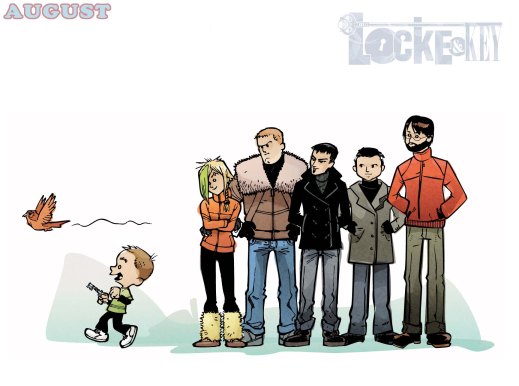Originally posted at The Nerds of Color
There’s a comic book out there by Joe Hill. It’s called Locke & Key (from IDW Publishing). And, it’s the best comic book you’re probably not reading.
In fact, it’s proof that while the conventional superhero comic might be for children, the comic genre can and does create compelling, sophisticated, and intelligent stories for adults. And, it can do so while appealing to the cape-and-cowl crowd.
This post contains very minor spoilers. Please read with care.
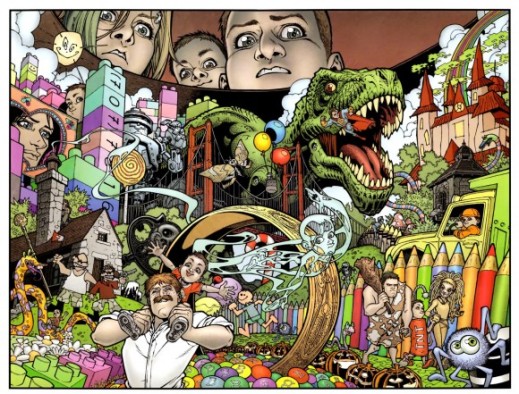
Alan Moore once asserted that the reason most comics suck is that most writers don’t write for a visual medium. Taking that assertion to heart, Joe Hill’s Locke & Key is almost the perfect example of good comic book writing. It is a book that would fail in any other medium — either the non-visual world of prose, or the fully live-action world of television or movies — but works perfectly as a comic book and the limitations/possibilities that this very specific genre has to offer. Hill understands complex narrative structure that integrates panel art into story-telling. He allows his panels to support his story-telling, rather than being mere window-dressing, but neither does he rely on his art to sell his books (see Top Cow).
That being said, the sumptuous art (by Gabriel Rodriguez) is stand-alone in its quality and breathtaking beauty (and yes, I am an art snob, who literally can’t read a book with bad pencil work). Rodriguez’s fantastic lines and incredible use of colour is perfect in transporting the reader to a New England world where children are literally limited only by their own imaginations.
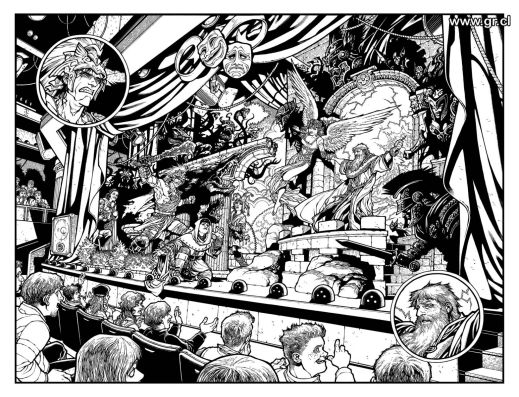
In brief, this book focuses on the adventures of three siblings who move into their father’s mysterious childhood home — named Keyhouse — by their suddenly widowed mother. There, they discover that Keyhouse is home to a number of mysterious keys that grant the children incredible abilities if they are fitted into the proper locks. Now, the children must race to use the keys to uncover all of Keyhouse’s secrets, and protect the power of the keys from a powerful evil force that wants the keys for itself.
Five trades into Locke & Key, and the title has been completely enthralling. Not only does it have cool fight scenes and its own version of superpowers, but it’s also highly intelligent and doesn’t patronize its reader. It is smartly written and despite appearing to be a comic for children — and indeed featuring children as protagonists — this is a comic book for adults. Not only are there graphic scenes of violence, but more importantly the story grapples with several difficult themes, like substance abuse, the implied rape of a character, the homophobic beating of another character, and the death of a parent. Overall, the book explores the notion of childhood and innocence using art reminiscent of a Disney movie, but with themes appropriate for DC Vertigo.
The basic idea of Locke & Key is that identity is an artifice: influenced by both lived experiences and our own concepts of identity. To that end, the Keyhouse kids are able to literally transform themselves — into animals and mythological creatures but also their gender (and race) — with the quick turning of a key. One character literally lives a double life using the Gender Key, being introduced to the protagonists as both a man and a woman, each with distinct (and distinctly gendered) personalities and sexualities; and the reader can’t help but wonder if the switch in gender has changed the identity of the character, or vice versa.
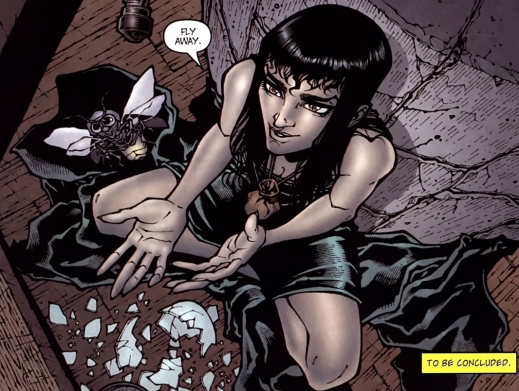
For most of the series, Kinsey uses the Head Key (pictured at the top of the post) to remove her own fear and sadness, literally changing her personality from an anxious and insecure girl into a brazen adrenaline junkie. The primary villain of the book is seeking the Keys, ostensibly to become a literal master of his own destiny and identity (although additional motivations have been somewhat retconned). One key even allows its wielder to switch between life and death.
In short, the book asks: are we predestined to be who we are, or do we make ourselves into the people we are? Locke & Key asserts that our notions are the products of our own invention, yet complicates the idea with characters who serve as counterarguments: the family matriarch who struggles with alcoholism after suffering a debilitating injury, the autistic child whose autism cannot be overcome with the mere turning of a key, the beautiful teenaged girl who will always be seen as vapid despite her aspirations towards something greater.

Locke & Key has had exactly one misstep: when it tried to tackle race. In one issue, the children must interrogate an elderly Black woman about the secrets of Keyhouse. One problem: she is suffering from dementia and screams out “White” in apparent revulsion when she first meets them, leading the children to conclude that she is racist against White people. The children then uncover the Skin Key, which allows them to transform their (White) race and become African-American; through the subsequent course of the story, they are able to approach the woman and talk to her (sort of), but also become the targets of racial profiling (again, sort of — you need to read the story so I don’t further spoil it).

In a book that has distinguished itself for its smart storytelling and nuanced discussion of (trans)gender identity, homosexuality, and alcohol addiction, this crude treatment of race (and in particular its overt depiction of our young protagonists in Blackface) is jarring and disappointing. The clichéd Skin Key, while paralleling a similar Gender Key, is so obviously problematic that (unlike the Gender Key, which is a critical component to the overall story arc) it hasn’t been seen again since the one issue when it was first introduced. It’s tempting to dismiss the book as offensive and kind of racist based on this issue alone, but that too would be unfair both to the overall quality of the book, as well as to what to what it has specifically accomplished when it comes to its ideas regarding the fluidity of identity.
Against this interesting backdrop, what I found fascinating is that I had such a negative reaction to the use of the Skin Key to hammer home the notion of fluid racial identity, whereas I have no such reaction to the much more prevalent use of the Gender Key. Why do I see race as rigid, fixed, and unchanging — and more importantly, that a fictional plot device that results in colourface is unacceptable? Yet, I have no issues with a character whose use of the Gender Key allows him to live as a woman?
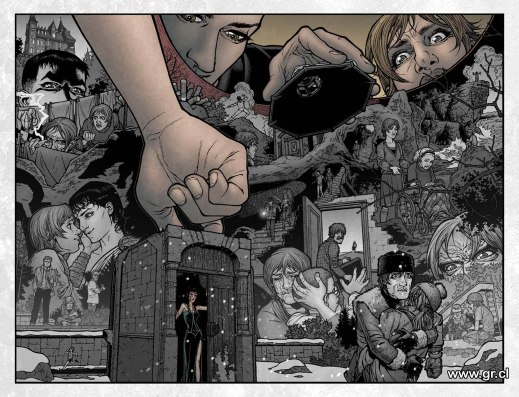
I think this has to do with our idea that gender and sexual identity is not made up of fixed points — male or female binaries; instead, contemporary gender theory asserts that gender identity and sexuality is a spectrum upon which we find ourselves somewhere closer to (or distant from) either extreme of masculine or feminine, hetero- or homosexual. The character who uses the Gender Key to switch between male and female is portrayed as as brash, athletic, and with a strong (hetero)sexual appetite; but he is also lithe, thin, and with facial features that are typically reserved for depicting female characters in the book’s anime-inspired style. In short, he is an integration of traits conventionally both masculine and feminine in the comic book medium, and so it is more easy to accept that his gender identity is fluid.
By contrast, we don’t typically think of race as a spectrum, wherein a person is “more Black” or “more Asian” than another person. We think of race as one, or a series of, absolutes. A person is or isn’t a person of colour; not in-between. We further don’t think of transracialization as possible, or appropriate. Plastic surgery aside, we don’t believe a person can actually move along some putative racial spectrum. Yet, how does this fit in with our contemporary notions of multiracial identity?
Ultimately, I find myself writing this post without any answers to these questions. Yet, I appreciate how Locke & Key has challenged my ideas of identity and absolutism. This is a comic that has made me think about my own pre-conceived notions of sociopolitical identity, and it did it through skillful integration of art and story-telling: dare I say, the perfect comic.
Have you been reading the book? What do you think? For those who haven’t been reading, Locke & Key is currently available in five collected trades, with its next trade scheduled for release soon.

